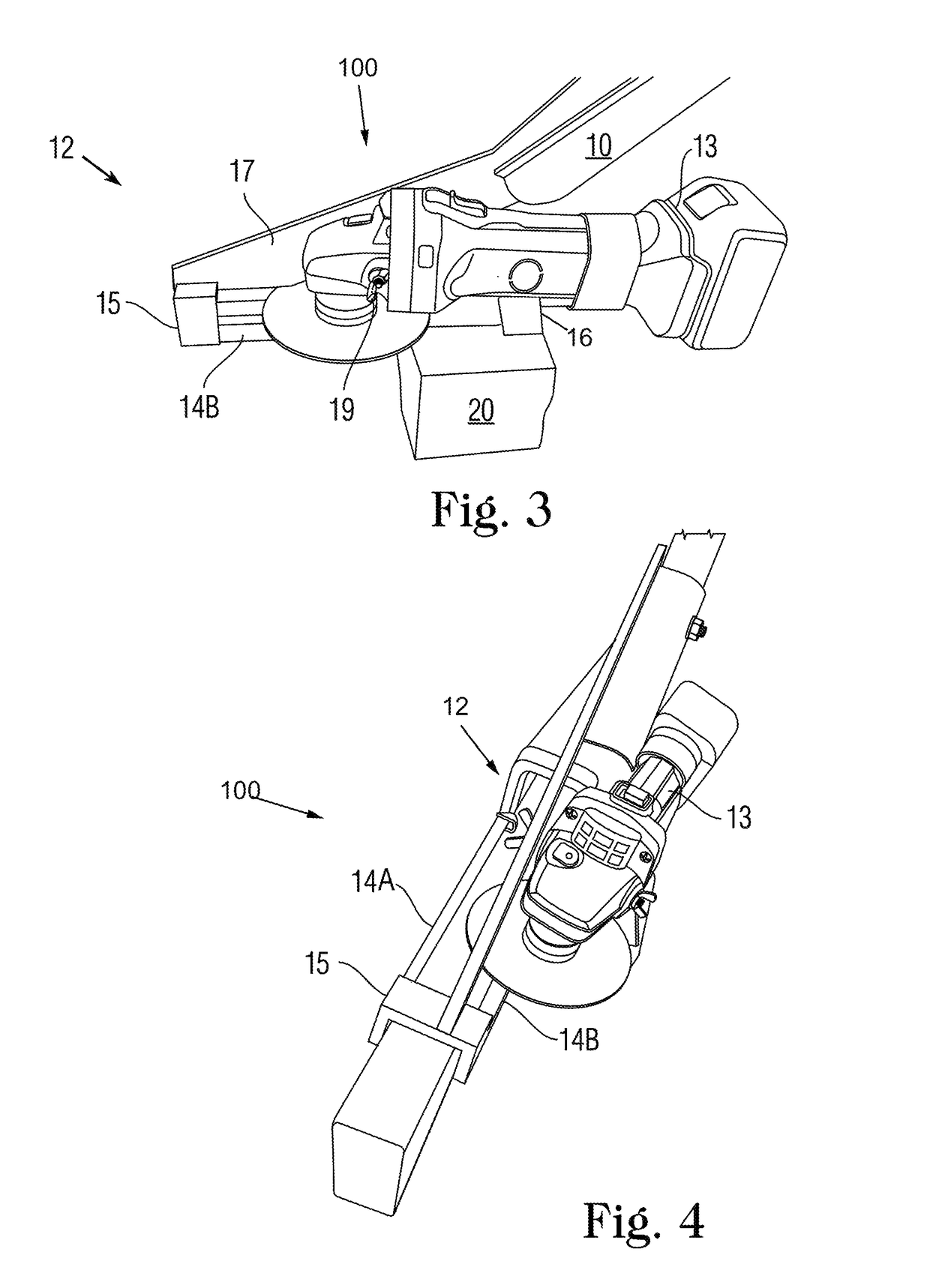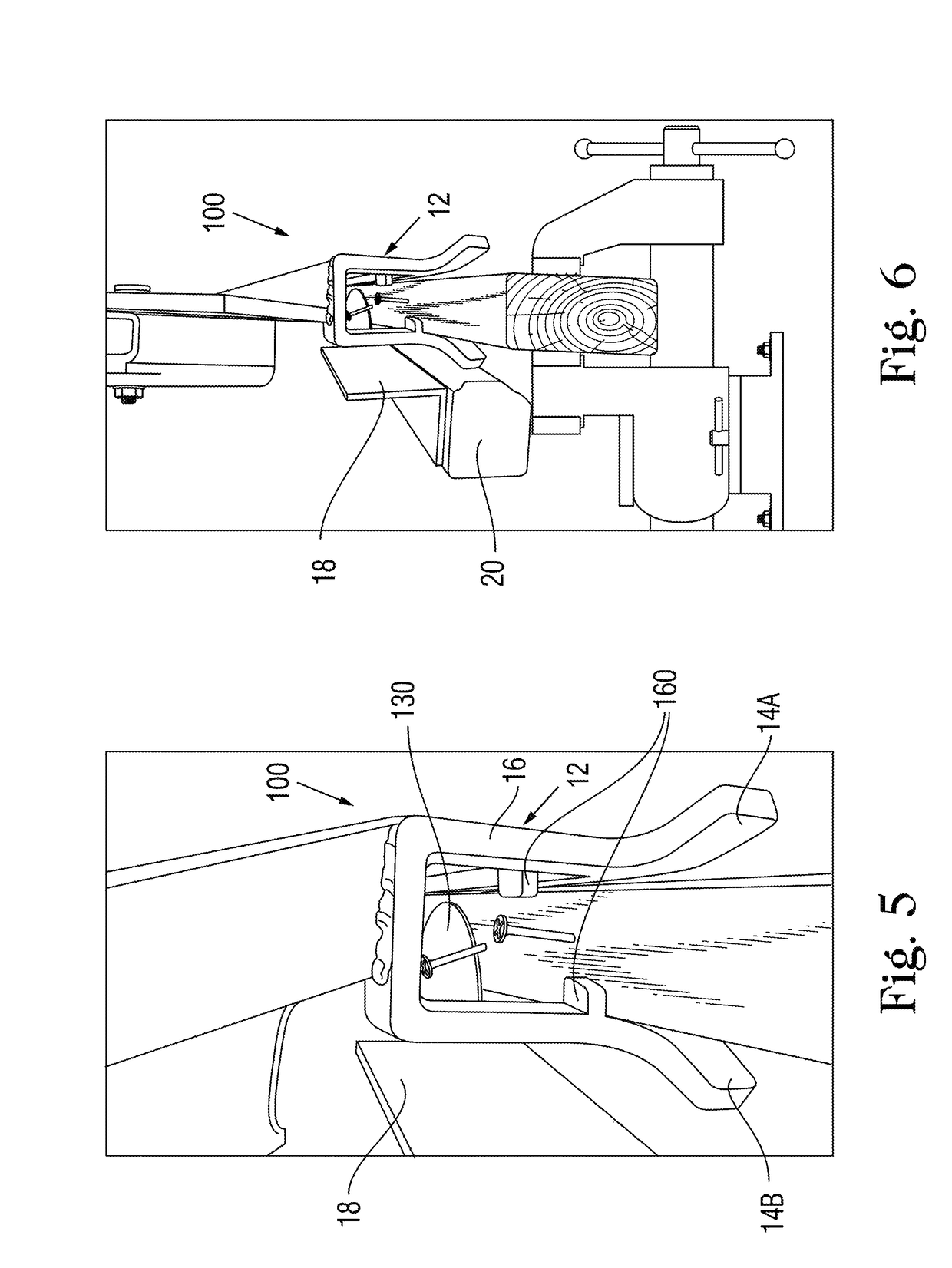Deck fastener removal tool
a technology for removing tools and fasteners, which is applied in the direction of manufacturing tools, metal sawing devices, metal sawing accessories, etc., can solve the problems of not providing a direct removal force, deck boards to shatter, and most pry bars not providing sufficient leverag
- Summary
- Abstract
- Description
- Claims
- Application Information
AI Technical Summary
Benefits of technology
Problems solved by technology
Method used
Image
Examples
Embodiment Construction
[0024]As seen in FIG. 1, the improved deck fastener cutting tool 100 according to the present invention generally comprises an adjustable and extendable waist-to-ground handle 10 with distal integrated caddy 12 for holding an angle grinder 13 or like cutting tool capable of severing the exposed portion of a protruding fastener even with the top of the joist. At one end of handle 10, a gripping section comprising at least a hand grip 11 that allows the operator to comfortably grip handle 10 using one or both hands, and from a standing position, to position the opposing end of handle 10 (including caddy 12 and cutting tool 13), on the top surface of an exposed joist having residual fasteners to be removed. Preferably, gripping section also includes a distal forearm cradle 110 offset from handle 10 to provide leverage over caddy 12 and cutting tool 13.
[0025]As seen in FIG. 2, caddy 12 in turn holds the rotary cutting blade 130 of cutting tool 13 flush with the top of the joist so as to...
PUM
| Property | Measurement | Unit |
|---|---|---|
| distance | aaaaa | aaaaa |
| distance | aaaaa | aaaaa |
| length | aaaaa | aaaaa |
Abstract
Description
Claims
Application Information
 Login to View More
Login to View More - R&D
- Intellectual Property
- Life Sciences
- Materials
- Tech Scout
- Unparalleled Data Quality
- Higher Quality Content
- 60% Fewer Hallucinations
Browse by: Latest US Patents, China's latest patents, Technical Efficacy Thesaurus, Application Domain, Technology Topic, Popular Technical Reports.
© 2025 PatSnap. All rights reserved.Legal|Privacy policy|Modern Slavery Act Transparency Statement|Sitemap|About US| Contact US: help@patsnap.com



